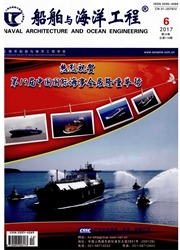

 中文摘要:
中文摘要:
The underwater glider changes its weight and the weight distribution through the battery use, to move up and down and forward in the sea. It enjoys many advantages such as a long endurance, and a long operational range with its unique device. The performance of the underwater glider can not evaluated only by the drag, the energy consumption is also one of the key factors. In this paper, the power conversion ratio is proposed according to the transfer efficiency from the gravitational potential energy to the available work, and the performances of three typical underwater gliders are evaluated from multi-angles, such as the drag, the power conversion ratio and the barycenter’s offset. So the glide performance and the energy consumption in various motion states can be analyzed. The results of this paper can provide a theoretical basis for further study of underwater gliders.
 英文摘要:
英文摘要:
The underwater glider changes its weight and the weight distribution through the battery use, to move up and down and forward in the sea. It enjoys many advantages such as a long endurance, and a long operational range with its unique device. The performance of the underwater glider can not evaluated only by the drag, the energy consumption is also one of the key factors. In this paper, the power conversion ratio is proposed according to the transfer efficiency from the gravitational potential energy to the available work, and the performances of three typical underwater gliders are evaluated from multi-angles, such as the drag, the power conversion ratio and the barycenter's offset. So the glide performance and the energy consumption in various motion states can be analyzed. The results of this paper can provide a theoretical basis for further study of underwater gliders.
 同期刊论文项目
同期刊论文项目
 同项目期刊论文
同项目期刊论文
 期刊信息
期刊信息
